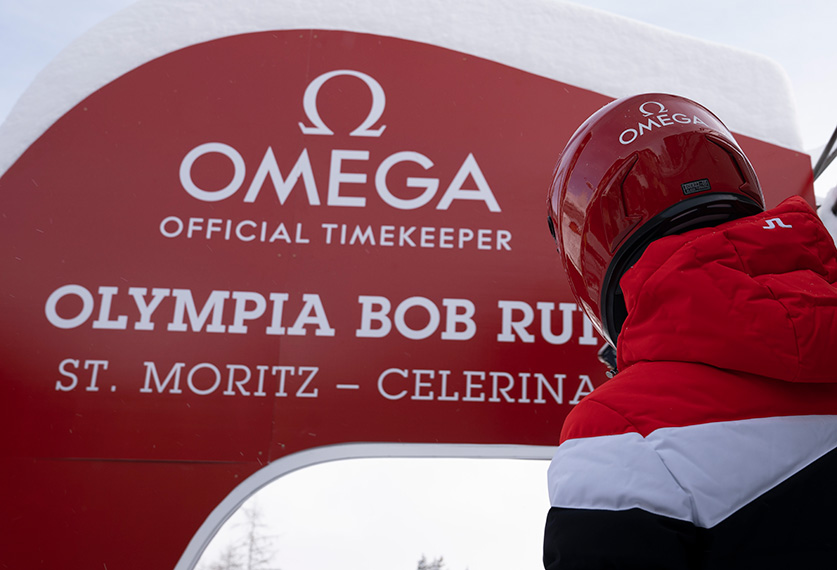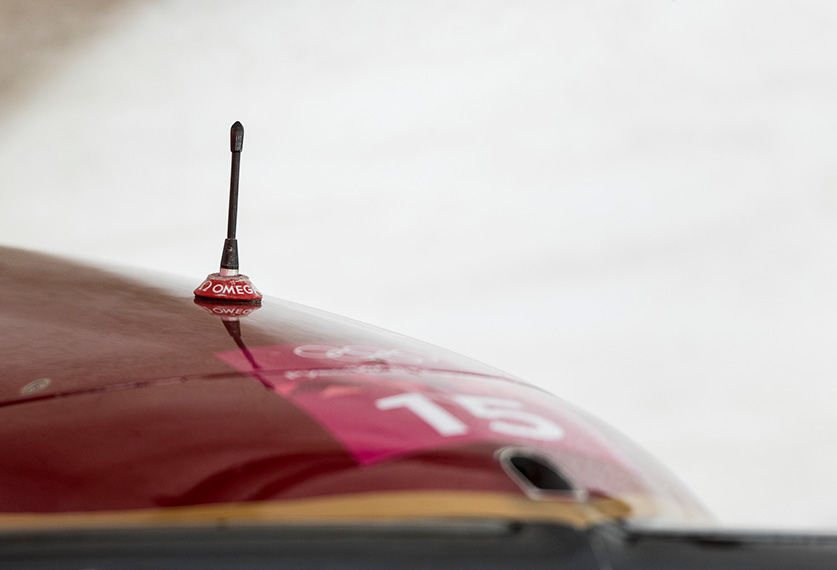
OMEGA Bobsleigh
This year, OMEGA has proudly extended its partnership with the IBSF, with a fresh renewal that will carry through to the 2026 / 2027 season. With plenty of action ahead, it’s always good to look back and remind ourselves of bobsleigh’s beginnings…
Bobsleigh’s Beginnings
This year, OMEGA has proudly extended its partnership with the IBSF, with a fresh renewal that will carry through to the 2026 / 2027 season. With plenty of action ahead, it’s always good to look back and remind ourselves of bobsleigh’s beginnings…
When the world’s first bobsleigh club opened in St. Moritz in 1897, standard wooden toboggans with rudimentary steering mechanisms were the only sleds on offer. Since then, the sport has gone rapidly downhill – in a good way. The name bobsleigh was coined with the arrival of steel sleds, in which the crews used to “bob” back and forth to increase their speed on the straight sections.
The first four-man bobsleigh race was held at the first-ever Olympic Winter Games in Chamonix in 1924. Just eight years later, the first two-man race was held at the Olympic Winter Games in Lake Placid. Early bobsleigh racers were recruited from other sports such as athletics, which cultivated the strength and speed essential for a good start in a bobsleigh race. However, as the sport gained popularity, rules were introduced to limit the weight of the crew and sled, which led to the lean, strong competitors and sleek fibreglass sleds we’re familiar with today.
OMEGA’s Role
Thanks to OMEGA’s unparalleled reputation in sports timekeeping, reliable precision is guaranteed in bobsleigh. The object of the sport is simple enough, but to make it to the finish line without incident takes skill, a fiercely competitive spirit and courage. Crews of 2 or 4 push-off from a standing start; jump in, and attempt to head downhill in the fastest possible time. Teams can’t afford to waste even a fraction of a second. In bobsleigh, a 1/10th of a second advantage at the start can translate into a 3/10th of a second advantage by the finish line. Accurate timekeeping is vital, not just when racing, but during practice sessions. With no less than six intermediate times along the route to monitor their progress, teams can determine where along the course they need to improve their line.
The Magic Of Monobob
Since its arrival in 2011, Monobob has been a passion for OMEGA. The brand has helped to pioneer and grow the sport, and proudly welcomed its arrival at the Olympic Winter Games in Beijing 2022.
Known as the “Formula One” of winter sports, Monobob offers a dynamic twist on a classic winter event and features sleek one-person bobs, which are pushed, steered and braked by just one athlete. For this reason, the skill of the pilot makes all the difference. At 2.30 metres in length, the monobob is also quite light, weighing only around 130 kilograms, and can therefore reach speeds of up to 120 km/hour and can exert a gravitational force of three to four Gs.
The sport features a range of OMEGA timekeeping equipment, including some of the same technologies often featured in traditional bobsleigh, including sensors inside each monobob, which can measure various factors such as G forces, angles, trajectory and acceleration.



















